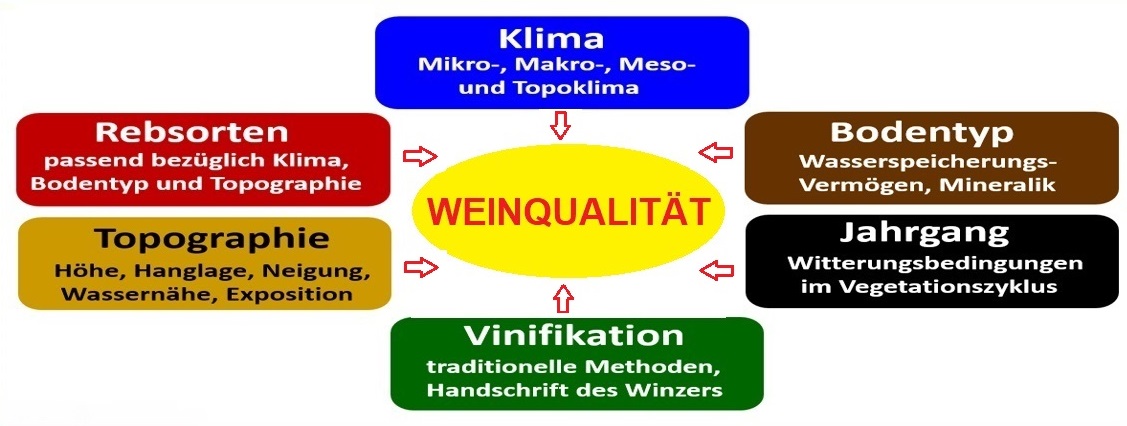For information on planting vines or creating a new vineyard, see the vineyard establishment plan.
Vine training plan
This refers to the planned establishment of a vineyard or the planting of vines in compliance with all laws, observance of all criteria and the necessary measures. Wine may only be produced from grapes that are grown on authorised vineyards that have been designated as suitable for viticulture (see above):
- Planting - planting of grafted or ungrafted (ungrafted) vines or parts thereof for the purpose of producing grapes or establishing a stock of mother vines for the production of rootstocks
- replanting - planting of vines that does not meet the definition of replanting
- Grubbing up - complete removal of the vines; no replanting right for the planting of wine grape varieties arises after the grubbing up of a rootstock pruning garden
- Replanting - of uprooted vineyards; is regulated in an EU regulation in the planting right
New plantings, replantings and grubbings must be reported to and authorised by the responsible state authority in compliance with all legal requirements of the European Union and, if applicable, the federal states.

Suitability for viticulture
Certain criteria must be met as an absolute prerequisite for the authorisation of a new area not previously used for viticulture. In addition to compliance with the relevant EU regulations, this primarily concerns the climatic conditions. At the time of colonisation, so-called homoclimates (areas with very similar conditions) were sought in the New World, especially French wine-growing areas. But the suitability of the soil also plays a decisive role. See in this regard under the keyword viticultural suitability.
Soil analysis
Soil analysis is used to determine the quality (creditworthiness) of a soil with regard to its suitability for agricultural use. Particularly when planting new vines for the first time, the first step is to analyse the soil in a laboratory using the so-called EUF method (electro-ultrafiltration) to determine the nutrients available to plants. This allows all the main nutrients and trace elements including nitrogen (in the form of ammonium and nitrate, as well as organically bound nitrogen) to be analysed. The Nmin method can be used to determine the mineral nitrogen content. The results of these analyses serve as a basis for any necessary fertilisation.

Grape varieties
Depending on the results of the...
Voices of our members

I have great respect for the scope and quality of the wein.plus encyclopaedia. It is a unique place to go for crisp, sound information on terms from the world of wine.
Dr. Edgar Müller
Dozent, Önologe und Weinbauberater, Bad Kreuznach